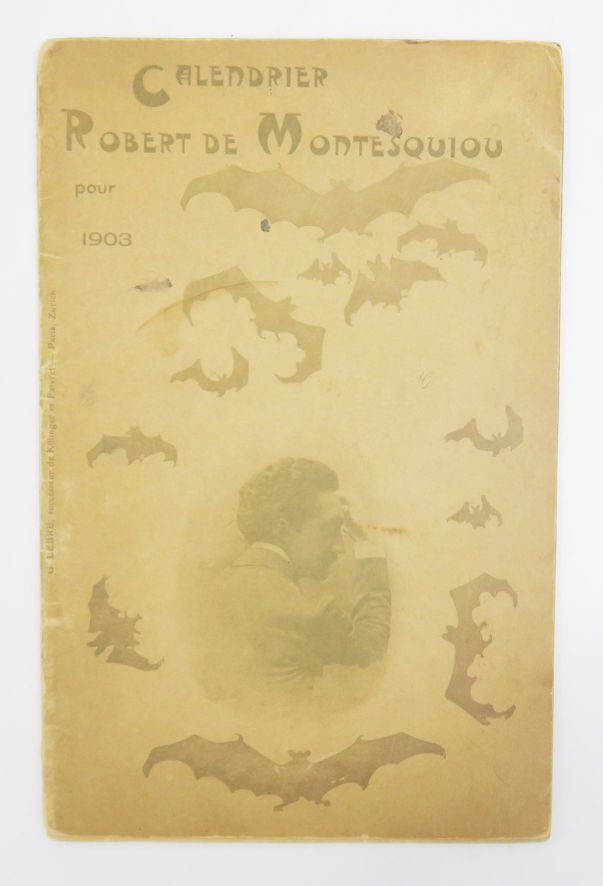Description
MONTESQUIOU (Robert de). Robert de Montesquiou calendar for 1903. Paris, Zurich, Lebre, [1903]. Paperback in-8, cover illustrated with a portrait of Montesquiou on the spine surrounded by bats. Small cut on spine, large light stain on back cover. 12 pages each featuring the month's calendar, a poem by R. de Montesquiou, a flight of bats and a woodcut vignette, all engraved and printed in metallic cameos and colors. A rare and beautiful brochure, with a sophisticated layout and printing.
1541
MONTESQUIOU (Robert de). Robert de Montesquiou calendar for 1903. Paris, Zurich, Lebre, [1903]. Paperback in-8, cover illustrated with a portrait of Montesquiou on the spine surrounded by bats. Small cut on spine, large light stain on back cover. 12 pages each featuring the month's calendar, a poem by R. de Montesquiou, a flight of bats and a woodcut vignette, all engraved and printed in metallic cameos and colors. A rare and beautiful brochure, with a sophisticated layout and printing.
You may also like
